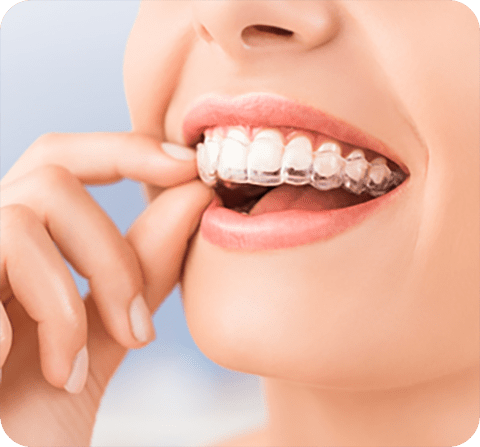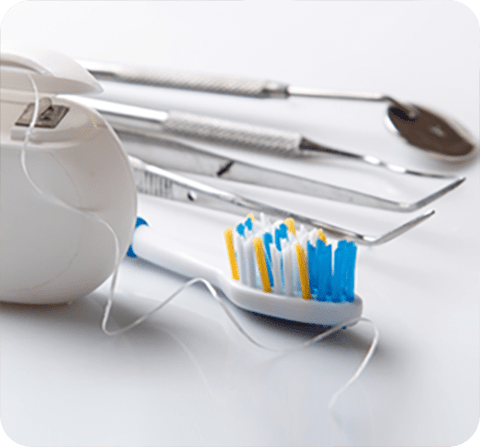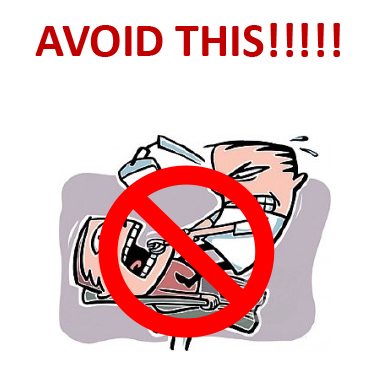General Dentistry
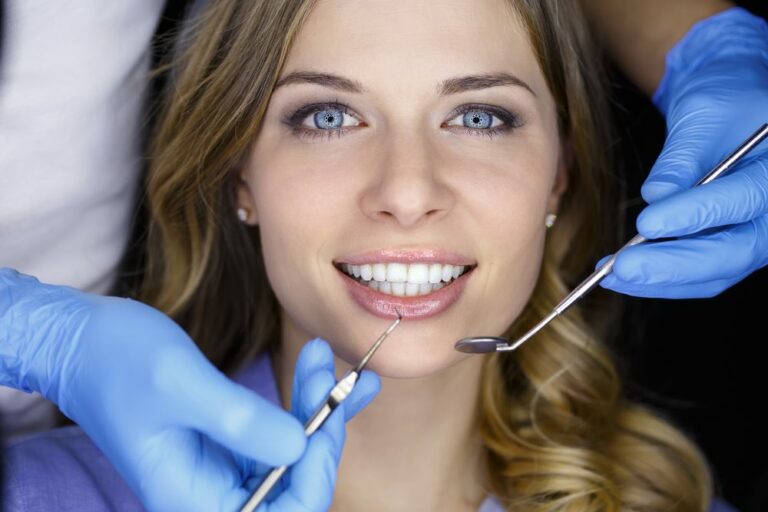
General dentistry encompasses a broad range of diseases and disorders of the oral and maxillofacial region. Everyone should see a general dentist for routine oral health examinations, twice-yearly cleanings, and treatment of routine oral health complications, such as minor tooth decay. General dentistry is as much about prevention as it is about treatment. Patients who visit a general dentist can expect professional oral health care, as well as education and advisement about self-care between office visits.

Did you know…that the American Dental Association recommends that every American visit a general dentist a minimum of one time every six months? Doing so can aid in the detection of decay, oral disease and other dental health problems before the progress and become severe. If you are at risk for certain complications or have a history or periodontal disease and advanced decay, you may need to visit your general dentist on a more frequent basis. Patients who visit their dentist regularly and as recommended are more likely to retain their natural teeth and enjoy a lifetime of good oral health.
Do I need to visit a general dentist?Frequently Asked Questions
Yes. Even if you are not currently experiencing any symptoms of tooth decay or gum disease, it is important to visit your dentist for a thorough examination and cleaning. Despite daily brushing and flossing, your teeth can still accumulate tartar that can harbor bacteria. These bacteria can lead to gum disease and tooth decay if not professionally removed at your dentist’s office.
What should I expect during my dentist visit?
Your visit will begin with a general inspection of the condition of your teeth. If you have not been to the dentist in a while, your dentist may order x-rays. An oral hygienist will then use special metal instruments to gently scrape away tartar along your gum line. Later, your dentist will review your x-rays and discuss any symptoms you may have been experiencing. He or she will then make a recommendation for treatment (if applicable) and answer any questions you may have.
Are there any special instructions I need to follow after seeing my dentist?
Based on the results of your dental check-up, your general dentist may recommend that you return for treatment or follow a special at-home oral care plan. You may also be referred to a dental specialist for treatment of advanced oral health conditions.
Cosmetic Dentistry
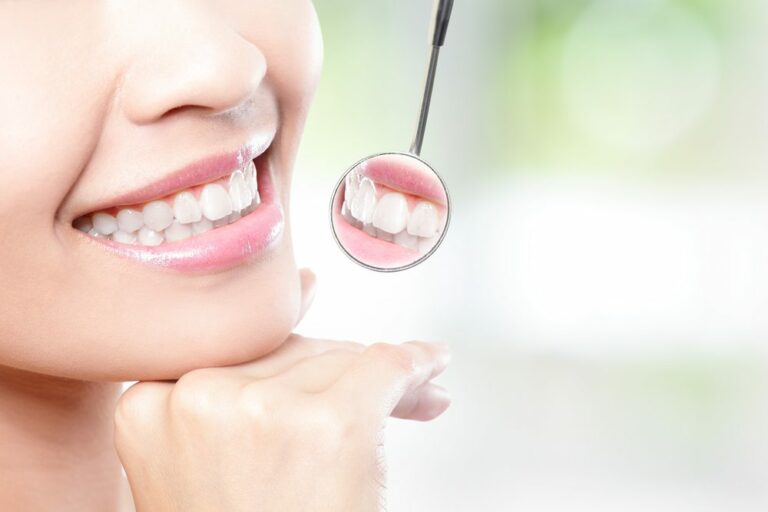
Your smile is the first impression that others have of you, so it makes sense that you would want it to be bright, white and healthy. According to the American Academy of Cosmetic Dentistry, more than 99 percent of all American adults believe that a smile is an important asset for social situations. Perhaps that is why so many patients are electing cosmetic dental procedures to improve their smiles and boost self-confidence.
Did you know…
that cosmetic dentistry is more than just teeth whitening? Your cosmetic dentist is also capable of transforming your smile’s shape, color, alignment, as well as filling in gaps and discreetly restoring decayed or damaged teeth with tooth-colored fillings. In fact, modern advancements in cosmetic dentistry have made it possible for patients to achieve nearly perfect teeth with cosmetic enhancements and restorations that are virtually undetectable to friends, family and peers.
Frequently Asked Questions
Am I a candidate for cosmetic dentistry?
You may be a candidate for cosmetic dentistry if your healthy teeth have imperfections that you would prefer to be changed to enhance the appearance of your smile. It is important to recognize that esthetic dental treatments are not meant to alter your overall appearance, but rather to provide a positive change that compliments the health and natural appearance of your teeth. If you think cosmetic dentistry is right for you, contact your cosmetic dentist today to schedule a consultation.
What should I expect from my cosmetic dental visit?
Due to great strides in dentistry, cosmetic, restorative and general dentistry can overlap in a single visit. You can expect your cosmetic dentist to discuss health implications, as well as esthetics at your appointment.
What types of cosmetic treatments are available to me?
There are many types of cosmetic treatments available, from in-office teeth whitening to total smile make-overs. The types of treatments available to you will depend on your overall goals, but may include professional whitening, tooth-colored fillings, bonding, crowns, veneers, or dental implants.
What should I expect after receiving a cosmetic treatment?
You will receive special care instructions following your treatment. For example, if you have your teeth whitened you should avoid highly pigmented beverages and foods for several days to prevent staining. On the other hand, a dental implant make-over may require a significant amount of down time, as well as a temporary, but limited diet.
Dental Cleaning & Consultation
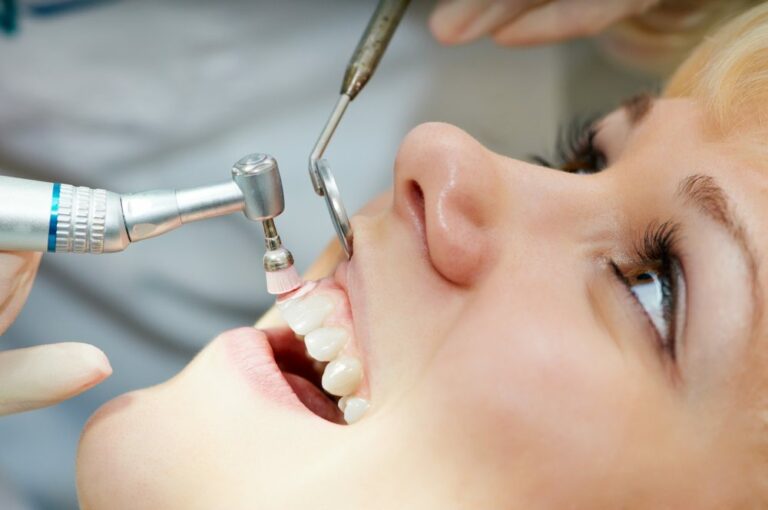
Preventative care is a foundation of dentistry. The American Dental Association recommends visiting your dentist regularly – usually about twice yearly – for full cleanings, examinations, and consultations for potential treatment. Professional dental cleanings help remove built-up plaque that is not removable using conventional brushing and flossing. Often, dentists are also capable of identifying potential problems that patients are not yet able to see or feel. When you maintain regular preventative dental appointments, you can stave off decay and gum disease, as well as identify the beginnings of oral health problems before they become severe.

Did you know…that Americans are less and less likely to visit the dentist as they age? Data from the Centers for Disease Control reports that only 57 percent of Americans over age 65 visited the dentist in 2010. That compares to about 61 percent adults under age 65 and about 79 percent of children ages 2 to 17. Nonetheless, it is important to visit the dentist for cleanings and exams regardless of how long has passed since your most recent dental appointment.
Frequently Asked Questions
Do I really need to have my teeth professionally cleaned by my Mount Pleasant dentist?
Yes. Even if you brush and floss after every meal and before bed, bacteria-harboring plaque can accumulate in the tiniest crevices, grooves and pits. Overtime, the teeth will begin to decay in those areas, which may result in pain and partial or total tooth loss.
What should I expect at my cleaning and exam consultation?
Your cleaning and consultation will consist of a visible examination of the teeth and gums. If you haven’t been to the dentist in a while, you may also require x-rays for a more comprehensive view of your teeth. You’ll also consult with Dr. Lucas about any oral health problems you may have been having or questions that you may have. The cleaning will follow, during which a dental hygienist will use special instruments to remove hardened plaque from your teeth. Finally, your teeth will be polished before Dr. Lucas discusses any treatment recommendations he or she may have for you.
What types of guidelines should I follow after my visit?
In between dental cleanings and consultations, be sure to maintain good oral habits at home. This includes daily flossing and brushing after meals. It’s also important to drink fluoridated water and use a fluoridated toothpaste.
Sports Mouth Guard

Dental mouth guards have long been used to protect the teeth, gums and supporting tissues from damage, injury and trauma. There are two types of sports mouth guards – over the counter and custom. While OTC guards are helpful for occasional use, many dental patients require the benefit of a customized dental mouth guard fitted by a dentist to effectively prevent injury.
Caring for your new custom mouth guard is simple.
The American Dental Association recommends keeping protected in a sturdy container in between usage. You should also be careful to clean your mouth guard after use and occasionally soak it in cool, soapy water for thorough sanitation. Custom dental mouth guards are designed for durability, but it is important to check your mouth guard for signs of wear every few months. Mouth guards for children and teens must be replaced frequently to account for growing jaws and changes to the teeth.
Frequently Asked Questions
Do I need a dental mouth guard?
There are many reasons why wearing a dental mouth guard could be right for you. A few examples include:
- Nighttime wear to prevent damage from teeth grinding and bruxism
- Tooth and lip protection during high-impact sports, such as martial arts
- To serve as a barrier between the lips and oral appliances, such as metal braces
- To protect fragile bridgework
What should I expect when my dentist fits me for a mouth guard?
Your visit will consist of taking an impression of your teeth that will be used as a mold for your new mouth guard. You may even be able to leave your dental appointment with your custom mouth guard in-hand.
Should I follow any special instructions?
Before you leave your dentist’s office with your new mouth guard, you’ll receive instructions on how and when to wear it. If you suffer from TMJ disorders or bruxism, for example, you will likely wear your mouth guard at night. If you participate in recreational sports, however, you may only need to wear your mouth guard during physical activity.
Tooth Extractions
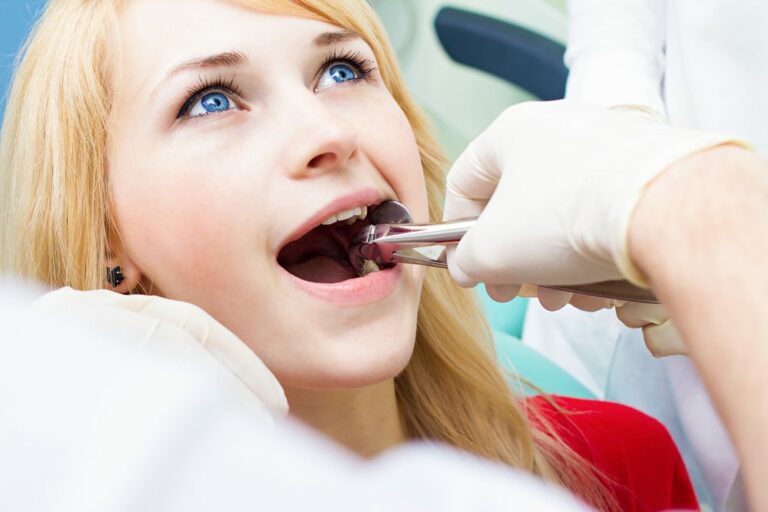
The use of a unique type of teeth extraction system by your Mount Pleasant dentist.
Our office uses advanced techniques in a majority of our dental treatments, and the tooth extraction procedure is not an exception!
The teeth extraction system and associated techniques Dr. Lucas utilizes are the most clinically effective and advanced extraction system available today. This technique eliminates the need for brute strength to achieve predictable extractions and is less traumatic than traditional extraction methods.
For the majority of our patients needing tooth/ teeth removal, the advanced and unique type of extraction system we implement provides:
- Predictable and efficient extractions in less time than traditional conventional techniques
- Atraumatic extractions, allows more bone surrounding the tooth to be preserved compared to traditional conventional techniques
- Higher success in elimination of root tip fractures versus traditional methods
- Decreased number of surgical instruments needed during tooth removal procedure
- Higher comfort level for the patient during the procedure.
If you would like to avoid a knee in the chest during your next tooth extraction, please call Prime Dental to make an appointment at 724 547 0690.
Frequently Asked Questions
Do I need a tooth extraction?
Only your dentist can tell you if you need a tooth extraction. However, you may be a candidate for the procedure if one or more of your teeth are decayed so severely that a filling or others restoration is not a possibility for treatment.
What should I expect during my tooth extraction appointment?
If you and your dentist decide to extract one or more teeth, you will be scheduled to return for oral surgery at a later date. You will be given a local anesthetic to prevent pain during the procedure, and you may be prescribed medications to help manage pain in the hours following your extraction. Depending on the nature of your extraction and other factors, such as whether your teeth are impacted, you may also be sedated or given general anesthesia during your procedure.
What type of post-treatment care will I need to follow?
Post-operative care following a tooth extraction is essential for healing and preventing complications. You will be instructed to avoid certain foods and also keep the surgical site clean at all times. If you are prescribed an antibiotic, it is important that you complete the course of treatment to prevent infection. Finally, you may be advised to avoid smoking or drinking through a straw, as doing so may delay the healing process and cause a condition known as ‘dry socket.’
Dental X-Rays
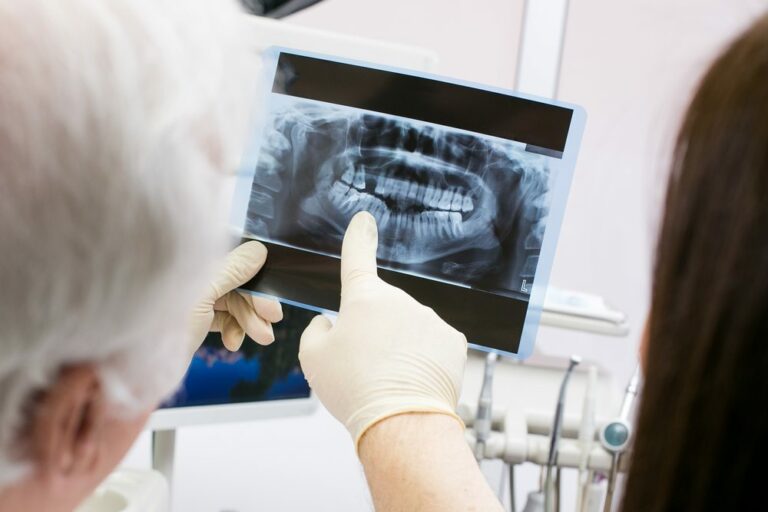
For years, dental x-rays have been used to diagnose oral health complications and detect decaying or damaged teeth. X-rays provide a unique view of the mouth that isn’t possible with a visual exam alone. When x-rays are taken, the teeth and bones absorb the majority of the ray, making them highly visible on film or on a screen. Nearly all new dental patients are x-rayed, although you may instead request that previous x-rays be transferred from another dental provider to your new dentist. By comparing your x-rays with your full mouth examination and dental history, your dentist can prescribe effective treatment and recommend a plan for preventative care.
Did you know…
that dental x-rays deliver very low levels of radiation and are considered completely safe? In fact, x-rays are even considered safe during pregnancy and while breastfeeding so long as a leaded apron and collar are used to protect your body from exposure. If you are pregnant or think you may be, tell your dentist so proper precautions can be taken.
Frequently Asked Questions
Should I get dental x-rays?
Yes. Dental x-rays are capable of identifying tooth decay and damage beneath the surface of the teeth where caries are less visible during an examination. Furthermore, x-rays provide a reference point for the progression of decay in your mouth over time. You should have x-rays taken on a regular basis, but especially if you are experiencing oral health complications or are planning to undergo a dental procedure, such as a root canal.
What should I expect when I get dental x-rays?
Getting traditional dental x-rays can take several minutes. A thick paper tab is placed into the mouth, which you will be asked to bite down on. Most patients find that dental x-rays are completely painless and do not inflict any level of discomfort. In some cases, dentists intraoral x-rays, as well as extra-oral x-rays that snap images of the face, jaw and skull. Extra-oral x-rays are typically used to identify impacted teeth, such as wisdom teeth.
What happens after my dentist has taken x-rays?
Your x-rays will be saved either on film or digitally. In the future, your dentist may request additional dental x-rays every few years to monitor the health of your teeth, gums and jaw over time. If you are considered to be high risk for oral disease or are exhibiting symptoms of complications, your dentist may prefer to take x-rays more frequently.
Provisional Restorations
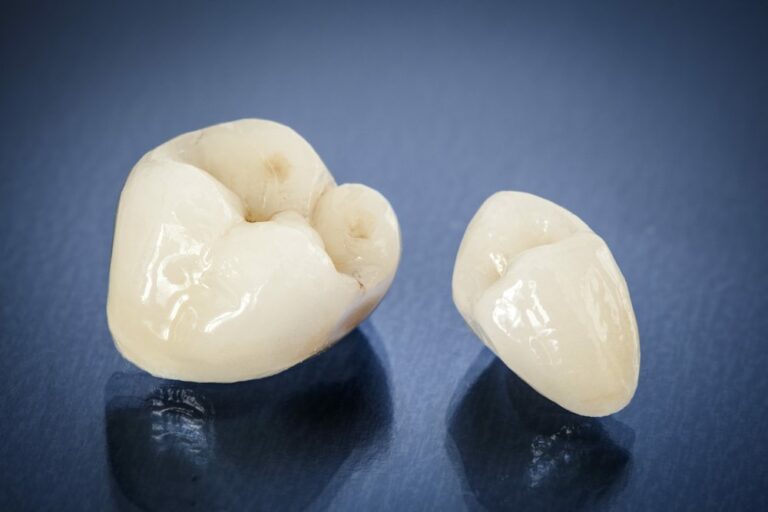
Provisional restorations are often used during complex restorative dental procedures to serve as temporary prosthetic replacements while patients wait for a permanent restoration. Provisional restorations offer patients to try-out the look and feel of the final prosthetic and make any necessary changes before the final fabrication and fitting. Unlike temporary prosthetics of the past, modern provisional restorations are highly functional and aesthetically pleasing. Today’s temporaries are composed of a quality acrylic resin that mimics the look and feel of permanent metal or ceramic restorations.
Did you know…
Provisional restorations are a primary component of smile reconstructions. In addition to serving cosmetic purposes for patients with missing or damaged teeth, dental temporaries provide the following functions:
- Reserving’ space for the permanent restoration by preventing surrounding tooth movement
- Protecting reduced natural teeth that are prepped for restorations
- Preserving the health and natural contours of the gums surrounding the restoration
- Protecting exposed dentin from bacteria and plaque
- Preventing tooth sensitivite
- Facilitating normal eating and speaking
Frequently Asked Questions
Will I need a provisional restoration during the course of my dental treatment?
You may need a provisional restoration if you are preparing to get a new crown, bridge, veneers, dental implants or some other permanent restoration. Temporaries may be put in place to ensure you are pleased with the aesthetics and fit of your new prosthetic. You may also be fit for a provisional restoration while you wait for a dental lab to finalize your permanent ones.
What should I expect when being fit for a dental temporary?
Temporaries are constructed in a dental laboratory using impressions and digital images of your teeth. The lab will produce a ‘wax-up’ that you will approve before the temporaries are fabricated. Your dentist will prepare your teeth for the provisional restorations and temporarily attach them to your teeth, where they will remain until you are ready for your permanent restorations.
Will I need to follow any special guidelines after receiving my temporary restoration?
You may need to wear your temporaries for just a few days or for several months depending on the type of dental reconstruction you are undergoing. Temporaries formed in place of crowns or veneers may only need to be worn for a few days to a few weeks, whereas dental implant and full-mouth reconstruction patients will need to wear provisional restorations for several months while the gums heal and the implants fuse with surrounding bone. Keep in mind that provisional restorations are less durable than permanent ones and are placed using provisional cement. Because it is possible for them to shift or become damaged, you should be careful to follow your dentist’s guidelines for caring for your temporaries – including using good oral hygiene, abiding by dietary restrictions, and using protective mouth gear during sports or high impact activity.
PFM Restorations
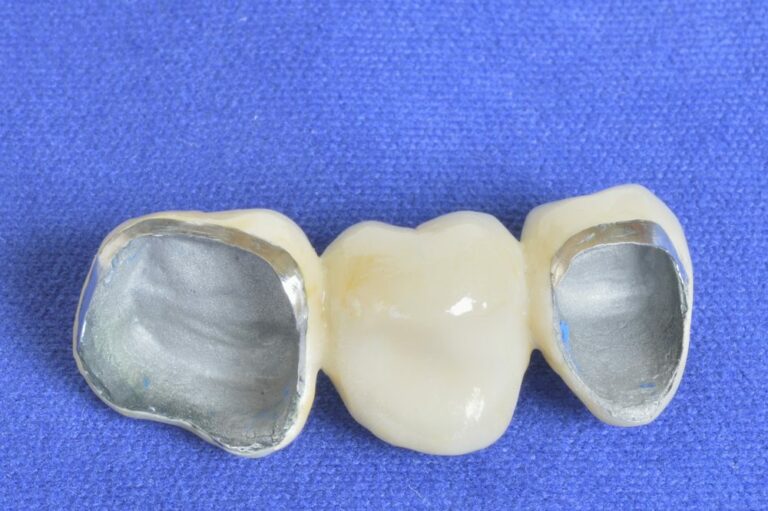
Porcelain fused to metal, or PFM restorations have been a standard in restorative dentistry for more than three decades. During that time, dentists around the world have adopted PFM crowns and bridges due to the versatility for use, as well as their ability to be matched to surrounding teeth. PFM crowns provide an excellent balance between resilience and esthetics. The underlying metal portion of the restorations provides long-lasting durability while the porcelain outer layer delivers a natural-looking appearance.
Did you know…
Dental crowns may be necessary for a number of reasons. They include:
- To restore the remaining tooth structure following a root canal
- To protect a tooth that is broken or damaged.
- To restore a decayed tooth with too much damage to support a new filling
- To anchor a dental bridge
- To disguise tooth discoloration that has not responded to whitening treatments
Frequently Asked Questions
Am I a candidate for PFM restorations?
You may be a candidate for PFM restorations if you are looking for a strong, but aesthetically appealing crown or bridge. PFM is especially beneficial to patients who suffer with bruxism that could lead to the deterioration of all-ceramic restorations. To find out more about porcelain-fused-to-metal restorations, contact your dentist to schedule a consultation.
What should I expect when being fitted for a PFM restoration?
You’re tooth will be prepared for your new [city] PFM restoration as your dentist gently removes the outer layer for bonding. An impression of your teeth will be made and sent to a dental lab for fabrication of a PFM restoration in a shade that matches your natural teeth. Finally, the restoration will be sent back for placement and permanent bonding.
Will I need to follow any special post-treatment care guidelines after being fit for a PFM restoration?
It is normal to experience some sensitivity to hot and cold temperatures after having a PFM restoration placed. However, this should subside, as should any soreness caused by tooth preparation. Be sure to follow the instructions provided to you by your dentist, and continue brushing and flossing on a daily basis to keep your PFM restoration clean and well cared for. Tell your dentist if your PFM crown or bridge causes you any pain of any kind or if it comes loose.
Partial Dentures
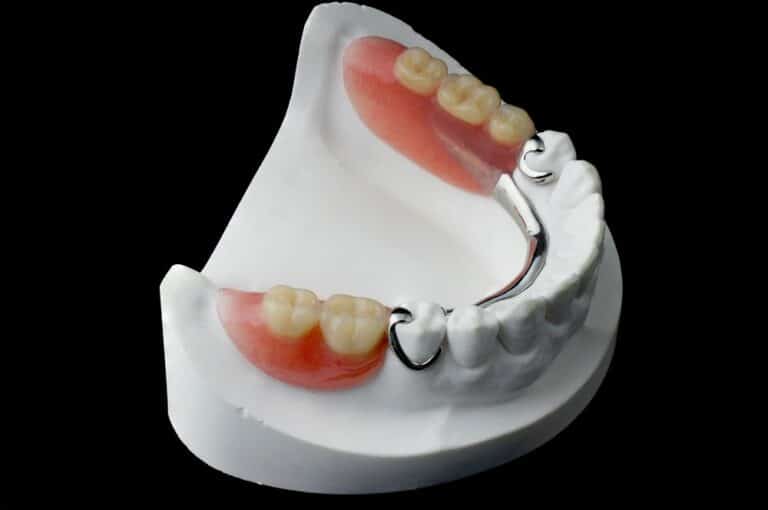
Like a bridge, partial dentures rest on surrounding teeth to fill in the gaps where one or more teeth are missing. But unlike a bridge, partial dentures are fully removable by the wearer. Partials are affordable alternatives to other types of dental prosthetics and are custom-made to blend in with each patient’s natural teeth. It takes a little time to adapt to new partials, but many people find that they reclaim much of their original function and aesthetics with partial dentures in place.
Did you know?
Partial dentures require gentle care and frequent cleaning. Once you get your new partial dentures, you’ll need to:
- Keep them moist at all times by soaking them in a denture solution when not in use
- Gently brush your dentures daily using a soft-bristled tooth brush
- Be careful not to drop your partial dentures, as they may break
- Avoid exposing your partial to hot temperatures that could cause warping
Frequently Asked Questions
Am I a candidate for partial dentures?
You may be a candidate for partial dentures if you have one or more missing teeth, and the space they once filled is surrounded by other teeth or permanent restorations. To find out more about whether partial dentures are right for you, schedule a consultation with your dentist.
What should I expect when being fit for partial dentures?
If you decide to get a partial denture, you’ll need to visit your dentist to have metal clasps attached to your surrounding teeth and an impression made of the area your partial will fill. The impression will be sent to a dental lab, where a technician will fabricate a custom denture that includes a gum-colored base that will fit securely over your gums. A metal framework will be used to attach your new partial to the clasps on your natural teeth to ensure a secure fit.
Will I need to follow any special oral health instructions after receiving my partials?
Yes. Good oral health is still important – even if you have a few missing teeth. In addition to caring for your new dental prosthetic, you’ll also need to brush your gums and tongue twice daily to stimulate circulation and remove bacteria that could cause gum disease. Continue seeing your dentist twice yearly for exams and cleanings, and be sure to bring your partial dentures along to each visit. After a few years, you may find that your partial needs to be rebased to better fit the changes to the bone structure in your mouth.
Bite Guards
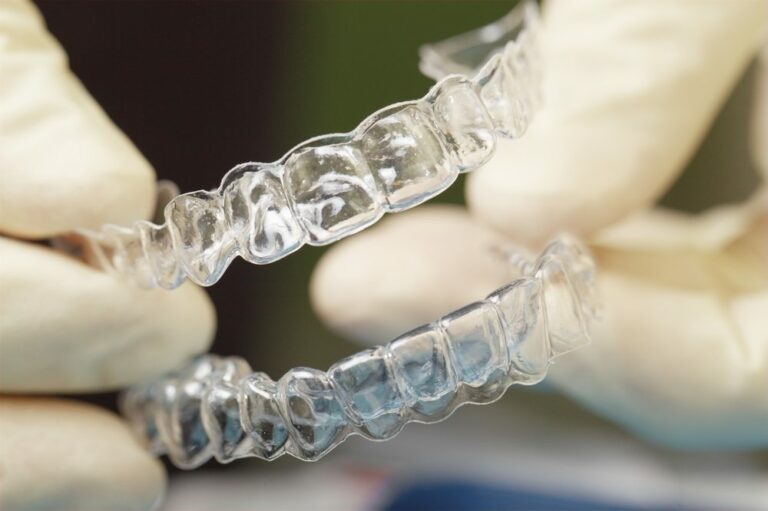
A bite guard is a dental appliance custom-fit to a patient’s teeth. Bite guards serve varying purposes and are often recommended for use in patients of all ages. It is important that bite guards be professionally fit, rather than purchased over the counter, as this ensures maximum comfort and protection during wear. Professional dental guards are usually prepared in a dental lab using an oral impression taken in a dentist’s office. These guards are created uniquely to each patient to prevent discomfort, slippage or inadequate protection. There are many reasons why a dentist would prescribe a mouth guard to a patient. They include:
- To protect the teeth, tongue and cheeks during sports and high-impact activities
- To protect the teeth from nighttime grinding or clenching
Did you know?
Caring for a dental bite guard is simple. You’ll need to rinse it before and after every usage using a soft-bristled toothbrush, toothpaste and cold water. From time to time, cleanse it with cold water and a mild soap. When not in use, store your mouth guard in a hard, ventilated container and keep it away from hot temperatures that could cause your guard to warp.
Frequently Asked Questions
Do I need a bite guard?
You absolutely need to be fit for a custom bite guard if you participate in sports or activities that put your oral health at risk. These guidelines also apply to children, who often play sports like football or participate in activities like martial arts, which can cause tooth-related injuries. You may also need a bite guard if your dentist diagnosis you with bruxism, or tooth-grinding. Over time, grinding or clenching the teeth can lead to wear and irreversible damage. Sleeping with a bite guard can protect the teeth from these unwanted side effects.
What should I expect when being fit for a dental bite guard?
Being fit for a bite guard is simple. You’ll visit your dentist, who will take an impression of your teeth and send it off to a dental laboratory. The lab will carefully construct a durable and comfortable new bite guard that you can pick up at your dentist’s office in just days.
Will I need to return to my dentist after getting my new bite guard?
Yes. Although custom bite guards are made of durable materials and designed to last through many uses, they do need to be replaced from time to time. Keep an eye on your bite guard, checking it frequently for wear. Also, bring it with you to your normal dental cleanings and check-ups for a professional inspection. Be sure to tell your dentist if your bite guard no longer offers an optimal fit or if it has become uncomfortable to wear.


